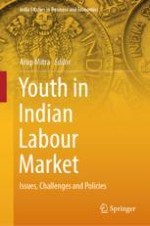2024 | OriginalPaper | Chapter
Employment Vulnerability Among Young Indian Workers
Authors : Gunjan Kumari, Neha Gupta, K. Narayanan
Published in: Youth in Indian Labour Market
Publisher: Springer Nature Singapore
Activate our intelligent search to find suitable subject content or patents.
Select sections of text to find matching patents with Artificial Intelligence. powered by
Select sections of text to find additional relevant content using AI-assisted search. powered by
